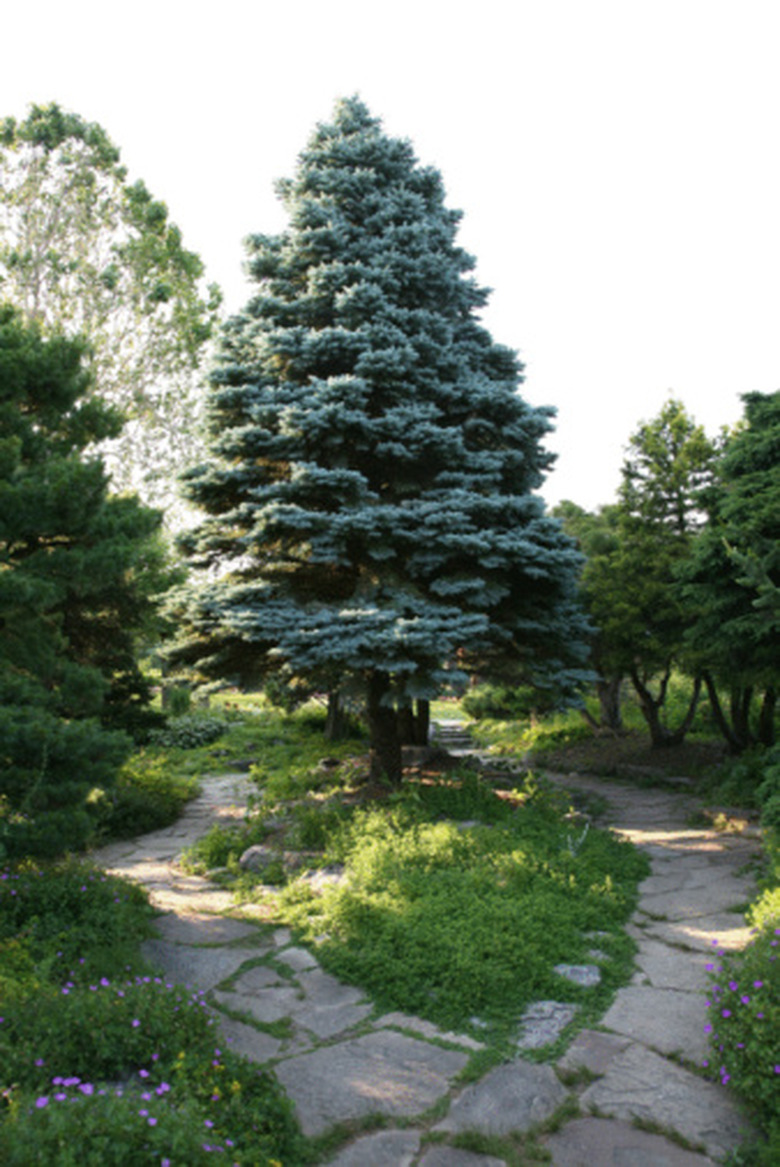Can I Grow A Blue Spruce Tree In Florida?
Florida enjoys a subtropical climate with mild winters and long, hot and sultry summers. This climate, along with soil conditions, makes growing plants native to cooler temperate climates difficult at best. The blue spruce (Picea pungens) must endure a prolonged winter dormancy with temperatures below freezing. It also must have a summer growing season that's not too hot — both in air and soil temperature. Blue spruce trees do not grow well for more than a year in Florida.
Incompatible Temperatures
Blue spruce trees prosper in a climate that's humid but much cooler than Florida's. The trees need winter temperatures to drop at least into the 12- to 15-degree Fahrenheit range. In summer, average temperatures around 70 degrees promote the best growth and plant health. In its native range across the Rocky Mountains, blue spruce trees endure a frost-free summer that lasts about two months. Across Florida, both winter and summer temperatures far exceed the optimal natural thresholds for blue spruces.
Hardiness
Blue spruce trees grow in U.S. Department of Agriculture plant hardiness zones 2 through 7. Florida lies in zones 8b through 11. According to the American Horticultural Society's heat zone map designations, blue spruce tolerates no more than 90 days of summer temperatures that exceed 86 degrees. This correlates to heat zones 1 through 7. Florida summers provide no less than 120 days of temperatures over 86 degrees, in heat zones 9 through 12.
Short-Term Cultivation
A seedling blue spruce, or dwarf variety of blue spruce, may live for a year in Florida, but it then becomes stressed from lack of winter cold and excessive heat and humidity. Decreased vigor and the onset of various diseases and pests ultimately kills a spruce tree weakened by poor environmental conditions. If the spruce is brought to Florida in fall, it will look fine through the cool but mild winter months, but eventually die by the end of summer. Keeping the plant out of the hot summer sun may improve its appearance temporarily.
Alternatives
Florida gardeners who enjoy the blue spruce's conical silhouette or blue-green foliage could plant other species that may endure longer in their climate. According to Michael Dirr, notable woody plant expert from the University of Georgia, the momi fir (Abies firma) is a potential good substitute only in North Florida. In the rest of the state, blue foliage from Arizona cypress (Cupressus glabra) cultivars may be attractive for up to five years, eventually dying from summer humidity. The common China-fir (Cunninghamia lanceolata) provides a blue-green, prickly needle similar to the blue spruce. Grow this tree no farther south than Orlando.
References
- U.S. Forest Service; Picea Pungens; Gilbert H. Fechner
- "A-Z Encyclopedia of Garden Plants"; Christopher Brickell and H. Marc Cathey, eds.; 2004
- "Dirr's Trees and Shrubs for Warm Climates"; Michael A. Dirr; 2002
